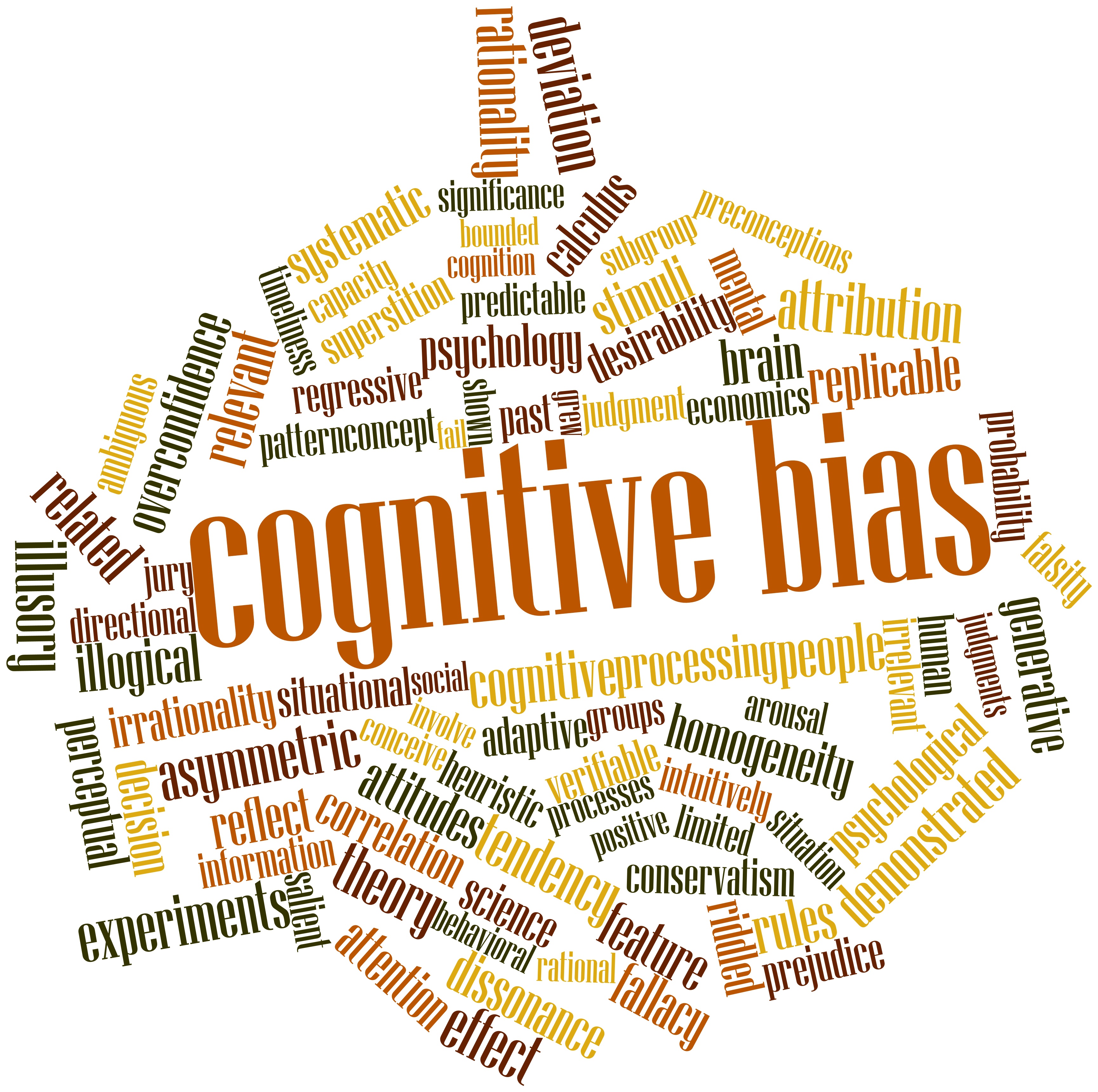How to develop critical habits of mind and practice: Raising consciousness around implicit social cognition’s influence on our work
Krista L. Prince, M.Ed.
Clare Counihan, Ph.D.
 Have you ever wondered how associations and factors beyond your awareness influence your good intentions in the workplace? Researchers exploring this question offer the concept of implicit social cognition as one answer to this question. Implicit social cognition, or implicit bias, is “a descriptive term encompassing thoughts and feelings that occur independently of conscious intention, awareness, or control” (Nosek & Riskind, 2012, p. 115). Our implicit social cognition means that, while we can’t regulate all of the messages to which we are exposed, our unconscious thoughts and feelings are still influenced by them. As a result, people often hold unconscious associations with which they would consciously disagree. It is even possible for us to internalize broader (often negative) societal messages about groups to which we ourselves belong. Contrary to the common belief that our behavior is a product of our conscious intentions, values, and beliefs; implicit social cognition often influences our actions and assumptions in ways we would not expect—and sometimes in ways we definitely wouldn’t like
Have you ever wondered how associations and factors beyond your awareness influence your good intentions in the workplace? Researchers exploring this question offer the concept of implicit social cognition as one answer to this question. Implicit social cognition, or implicit bias, is “a descriptive term encompassing thoughts and feelings that occur independently of conscious intention, awareness, or control” (Nosek & Riskind, 2012, p. 115). Our implicit social cognition means that, while we can’t regulate all of the messages to which we are exposed, our unconscious thoughts and feelings are still influenced by them. As a result, people often hold unconscious associations with which they would consciously disagree. It is even possible for us to internalize broader (often negative) societal messages about groups to which we ourselves belong. Contrary to the common belief that our behavior is a product of our conscious intentions, values, and beliefs; implicit social cognition often influences our actions and assumptions in ways we would not expect—and sometimes in ways we definitely wouldn’t like
Implicit social cognition can influence many areas of our work including, but not limited to: interactions with our colleagues, collaboration, supervision, advising, assessment, training, recruitment, hiring, policy development, and research. Learning about implicit social cognition is a vital first step if you want to pursue fair, equitable, and inclusive practices. In other words, recognizing how implicit bias shapes you is one way to make UNC a better place for everyone.
Start with yourself:
- Learn about how implicit bias works. The resources at the end of this article, along with materials you can find through the library database, are a great place to start. Peer-reviewed articles will provide research that’s been thoroughly vetted by scholars, but a number of magazines, such as Psychology Today and Scientific American, cover science for a popular audience. Librarians at the university and public libraries can help you if you’re not sure how reliable a source is.
- Acknowledge your own subjectivity; your personal position from and through which you see the world. Try as we might to be “objective” or “neutral,” none of us are really able to shed our experiences and social conditioning.
- Actively challenge your assumptions and stereotypes as you notice them. For example, if you catch yourself assuming that a woman wearing a “short” skirt is sexually promiscuous, pause to examine why that idea springs to your mind so readily. What stereotypes does it rely on? Is the stereotype consistent with your own beliefs? If someone applied a stereotype to you, would you think it was accurate? Alternately, you could counteract a negative stereotype with a positive connection: think about someone you know and respect; do their clothing choices impact your opinion of them?
- Find out your own implicit biases. Project Implicit, part of a Harvard-led study, has online exercises that let you see exactly how implicit bias works and how it affects you. Its established measures (inventories) demonstrate some of the most common forms of implicit bias, and they give you a way to see how “objectivity” is really tricky.
- Challenge yourself to meet and talk to people who are different from you. Just as importantly, don’t be upset if people are hesitant the first time you approach them. UNC-CH, North Carolina, and the US have many layers of complicated histories around race, gender, sexuality, class, nationality, and physical ability (to name just a few). It may take time to develop trusting relationships given our current realities and complicated histories.
Take that self-reflection and apply it to your work:
- Seek perspectives and input from a variety of individuals with multiple identities to reduce the effects of each individual’s biases.
- Compare identity-conscious and identity-anonymous results to identify if social biases may be contributing to outcomes. Several studies have documented how perceived race and gender can influence employers’ assessment of resumes and faculty’s response to students
- Adjust or restructure decision-making processes to reduce the potential for bias to have unwanted influence in the first place. For example, in one famous study, researchers hid musicians applying for places in an orchestra behind a screen. They found that concealing the gender of the candidate made it 50% more likely that women musicians would go further in the audition process. The widespread adoption of this audition method is responsible for dramatic increases in the number of women playing in professional orchestras. What processes in your department could be revamped to reduce the influence of bias?
This list is a starting place for understanding your own implicit associations and their influence on your actions and your workplace practices. Please consider referring to the additional resources below as you continue to move through this process.
Resources
Banaji, M.R., & Greenwald, A.G. (2013). Blindspot: Hidden biases of good people. New York, NY: Delacorte Press.
Godsil, R.D., & Tropp, L.R. (2015, January 9). The cognitive traps that can harm intergroup relations: racial anxiety and the stereotype threat can blunt our egalitarian impulses. Psychology Today. Retrieved from https://www.psychologytoday.com/blog/sound-science-sound-policy/201501/the-cognitive-traps-can-harm-intergroup-relations
Godsil, R.D., & Tropp, L.R. (2015, January 21). Racial dynamics in education and healthcare: How teachers and doctors inadvertently contribute to racial inequality. Psychology Today. Retrieved from https://www.psychologytoday.com/blog/sound-science-sound-policy/201501/racial-dynamics-in-education-and-health-care
Staats, C., Capatosto, K., Wright, R.A., Contractor, D. (2015). State of the science: Implicit bias review 2015. Kirwan Institute for the Study of Race and Ethnicity: The Ohio State University. Retrieved from http://kirwaninstitute.osu.edu/wp-content/uploads/2015/05/2015-kirwan-implicit-bias.pdf
Tropp, L.R., & Godsil, R.D. (2015, January 8). Resolving the paradox of race: What explains the different perceptions about the prevalence of racism in the US? Psychology Today. Retrieved from https://www.psychologytoday.com/blog/sound-science-sound-policy/201501/resolving-the-paradox-race
Tropp, L.R., & Godsil, R.D. (2015, January 23). Overcoming implicit bias and racial anxiety: Fighting subconscious bias takes effort-but it can be done. Psychology Today. Retrieved from https://www.psychologytoday.com/blog/sound-science-sound-policy/201501/overcoming-implicit-bias-and-racial-anxiety
References
Bertrand, M., & Mullainathan, S. (2003). Are Emily and Greg more employable than Lakisha and Jamal? A field experiment on market labor discrimination. American Economic Review, 94, 991-1013. Retrieved from http://www.nber.org/papers/w9873
Diversity and unconscious bias in the hiring process- Selected references. (n.d.). Retrieved January 29, 2016, from http://www2.humboldt.edu/hsuhr/diversityrecruitment/documents/Selected References – Staff and Managers Fall 13.pdf
Goldin, C. & Rouse, C. (2000). Orchestrating impartiality: The impact of “blind” auditions on female musicians. American Economic Review, 90, 715-741. Retrieved from http://www.nber.org/papers/w5903
Nosek, B.A., & Riskind, R.G. (2012). Policy implications of implicit social cognition. Social Issues and Policy Review, 6 (1), 113-147.
Moss-Racusin, C.A., Dovidio, J.F., Brescoll, V.L., Graham, M.J., & Handelsman, J. (2012). Science faculty’s subtle gender biases favor male students. Proceedings of the National Academy of Sciences of the United States of America, 109 (41), 16474-16479. Retrieved from http://www.pnas.org/content/109/41/16474.full.
Steinpreis, R.E., Anders, K.A., & Ritzke, D. (1999). The impact of gender on the review of the curricula vitae of job applicants and tenure candidates: A national empirical study. Sex Roles, 41 (7/8), 509-528. Retrieved from http://advance.cornell.edu/documents/ImpactofGender.pdf
